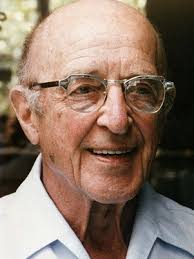Carl Rogers Client-Centered Therapy - Prof. H.-W. Gessmann at PERIYAR University Salem, India
Lee Justin Rondina

it’s important to talk about troubling or unsatisfying elements in a relationship that are being kept secret. Thus, having studied agriculture and theology in his early life, he later began making his mark in clinical psychology, where he was particularly interested in practical clinical work in educational counselling.
In his sessions, Roger tried to gain as much knowledge as possible about his clients, but the way he acted was quite cruel and distant, possibly influenced by his parental relationship. While studying psychoanalysis, he was struck by a warm and sympathetic demeanor from a particular professor, with whom he was more intrigued by the personality than the lectures themselves. So, from his mistakes with some clients who didn’t work well with his diagnosis and advice, he learned to question his remote way of dealing with clients and to trust his own way. Otto Rank, Freud’s student, later encouraged him to include the client’s ability to find their own solutions to the problem.
Roger’s experiences during this period were instrumental in his later work. He learned that dominant and authoritarian behavior when dealing with customers has at most short-term and superficial effects and that customers know best what bothers them, what conflicts they have and in which direction he/she wants to go.
Roger then became a professor at Ohio State University, where he developed his person-centered psychotherapy. It was clearly characterized by direct therapy and psychoanalytic treatments, in which he presented it to the public in 1942 through his book “Counselling and Psychotherapy”. Thus, this book formally introduced the first of three phases in the years of Roger’s conversational psychotherapy development, the non-guideline phase.
It has been estimated that the no-policy phase began around 1940-1950. The main goal of therapy at this stage was to create a free and fear-free atmosphere in which the client would assess himself, assess his situation and be able to solve his problems himself. The therapist sensitively accepts the client’s expressed feelings, but consciously refrains from advice and direction.
Rogers formulated a new attitude towards interpersonal relationships and attempted to act accordingly with University of Chicago students and staff while testing his hypotheses by intensifying the therapy research already begun at the time. In 1951, Rogers published another book, “Client-Centered Therapy”, in which he described his therapeutic approach, the philosophical foundations, empirical studies and a personality theory in detail. This again opened another phase for Roger’s client psychotherapy, lasting from about 1950 to 1967 but apparently overlapping the third phase of about 1957.
The second phase or the client-centred phase puts the focus on the client’s subjective world that needs to be perceived. Empathy creates understanding and conveys it to the customer. Emphasis is placed here on “self-concept” in which the therapist’s role is to help the client review and change self-concept. However, behavior follows three variables: (1) human, genuine response from the therapist without a facade, (2) warm and unconditional acceptance, and (3) compassionate understanding of the client’s world of experience. Meanwhile, the therapist’s attitude in client-centered therapy has been recognized as valid and beneficial not only in clinical therapy but also in other human coexistences.
The third and final phase of Roger’s CCP is referred to as person-centered therapy, spanning from 1957 to the present. At this stage, the focus is clearly on the relationship and ongoing process between therapist and client. The therapist no longer just reflects on the feelings expressed, but “involves himself”. Therapy becomes a comprehensive process of self-knowledge between therapist and client.
These three phases above briefly describe the major 40 years of the development of Rogers Conversation Therapy. And while the three share similarities throughout that describe the therapeutic approach as a whole, they do show the marked shifts in the therapist’s roles and in the relationship between therapist and client.
Undeniably, Roger’s conversational psychotherapy shaped the world of psychology and has continued to be recognized and applied to this day.
